Road Trip Along The East Coast of Spain by Car and Ferry
Travel Guides
Travel Guides

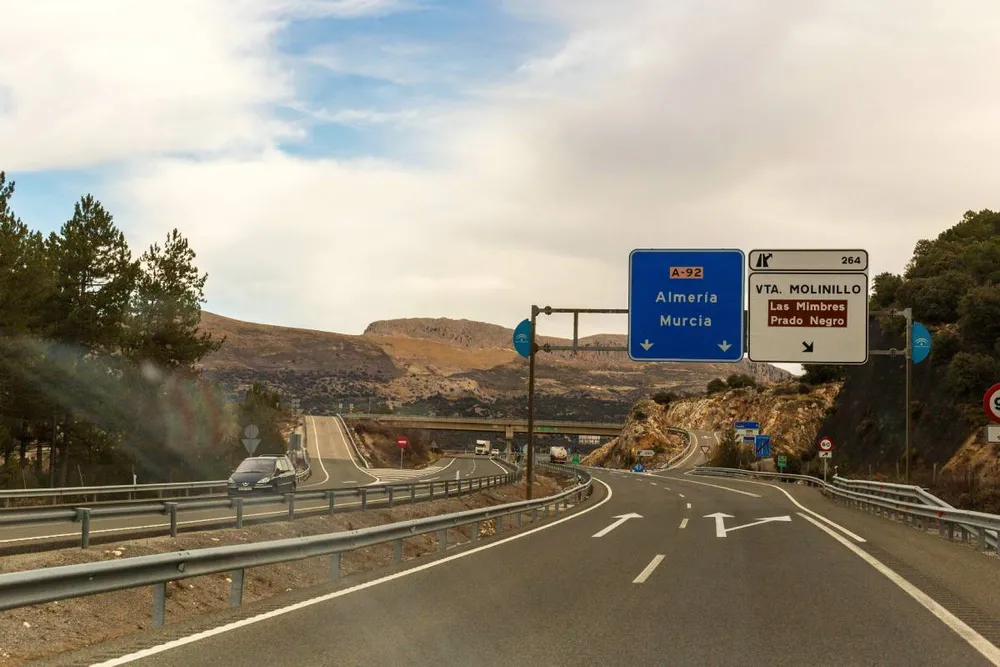
Driving along dazzling east coast of Spain offers the perfect blend of open-road freedom and Mediterranean enchantment. From cosmopolitan Barcelona to the sun-drenched shores of Almería, this route unfolds golden beaches, historic towns, vibrant cities, and a gastronomy that captivates at every stop.
What makes this journey truly unique is the opportunity to seamlessly combine road travel with ferry crossings. Spain’s major Mediterranean ports, such as Barcelona, Valencia, Dénia (Alicante), and Almería, open the door to unforgettable sea adventures. With your car on board, you can easily extend the trip to the Balearic Islands (Mallorca, Ibiza, Menorca, Formentera), venture toward Italy, or even set course for Morocco.
In this guide, you’ll find everything you need to plan your east coast itinerary, from the unmissable stops and cultural highlights to the best ferry routes that elevate your journey into a round-trip adventure. Whether you’re seeking inspiration, practical tips, or direct booking options, this guide will help you create an unforgettable Spanish escape.
The vibrant city of Barcelona is the ideal starting point for a road trip along Spain’s eastern coast. Cosmopolitan, creative, and well connected to the Mediterranean, it blends world-class culture, striking architecture, and a rich culinary scene. With Barcelona–El Prat Airport (BCN) offering the best domestic and international connections in the region, arriving here is both practical and convenient.
Barcelona is a true foodie haven. Explore the bustling stalls of La Boqueria Market, sample authentic tapas, and discover traditional Catalan dishes such as pa amb tomàquet, escudella, and the sweet crema catalana. Pair your meal with a crisp Penedès wine or a refreshing glass of local cava for the full experience.
The city never sleeps. By day, Barcelona brims with culture; by night, it transforms into a playground of tapas bars, lively terraces, and vibrant neighborhoods like El Born and Gràcia, with their alternative and bohemian edge. Football fans won’t want to miss a pilgrimage to the legendary Camp Nou stadium.
With its excellent location, Barcelona is the perfect place to pick up a rental car, enjoy a few days immersed in city life, and then hit the road south. The first major destination on your route: Valencia.
Distance to Valencia: approx. 350 km, or about 3.5 hours via the AP-7 motorway.
Barcelona’s port is one of the Mediterranean’s busiest, offering countless opportunities to continue your trip by ferry. With your car on board, you can sail directly to the Balearic Islands, including Mallorca, Ibiza, Menorca, and Formentera, or set your sights further afield toward Italy. These sea routes allow you to combine your road trip with new horizons.
| Route | Frequency | Operator | Price From |
| Barcelona to Mallorca (Palma) Ferry | Daily | Balearia, GNV, Trasmed | $27 |
| Barcelona to Ibiza Ferry | Several times a week | Balearia, GNV, Trasmed | $20 |
| Barcelona to Ciutadella (Menorca) Ferry | Daily in high season | Balearia | $98 |
| Barcelona to Porto Torres Ferry | 1-2 times a week | Grimaldi Lines | $60 |

Heading south from Barcelona, your journey brings you to Valencia, a city that perfectly blends tradition and modernity. With its rich history, Mediterranean lifestyle, and world-famous gastronomy, Valencia is a stop that promises to capture your heart, especially as the birthplace of paella.
Valencia is synonymous with paella, but its culinary scene extends far beyond. Try a flavorful fideuà (paella-style dish made with noodles), sip on a refreshing horchata paired with sweet fartons in the nearby town of Alboraya, and enjoy tapas in the bustling El Carmen district.
If you visit in March, you’ll witness Las Fallas, one of Spain’s most spectacular festivals, where giant artistic monuments are paraded and set aflame in a blaze of light and tradition, recognized by UNESCO as Intangible Cultural Heritage. The rest of the year, Valencia offers a relaxed Mediterranean rhythm, from vibrant Central Market food stalls to lively seaside nightlife.
Conveniently located midway between Barcelona and Alicante, Valencia is a natural pause on any coastal itinerary. It’s the perfect place to recharge, soak up local culture, and prepare for the next stretch of your journey.
Distance from Barcelona to Valencia: approx. 350 km (about 3.5 hours by car on the AP-7).
Next stop: Alicante, about 165 km (roughly 2 hours via the AP-7).
The Port of Valencia is a key Mediterranean hub with fast, frequent ferry services to the Balearic Islands. With your car on board, you can set sail to Mallorca, Ibiza, Menorca, or Formentera, adding a maritime adventure to your coastal road trip.
| Route | Frequency | Operator | Price From |
| Valencia to Ibiza Ferry | Daily | Balearia, Trasmed, GNV | $50 |
| Valencia to Mallorca (Palma) Ferry | Daily | Balearia, Trasmed, GNV | $35 |
| Valencia to Menorca (Mahon) Ferry | Several times a week | Trasmed | $82 |
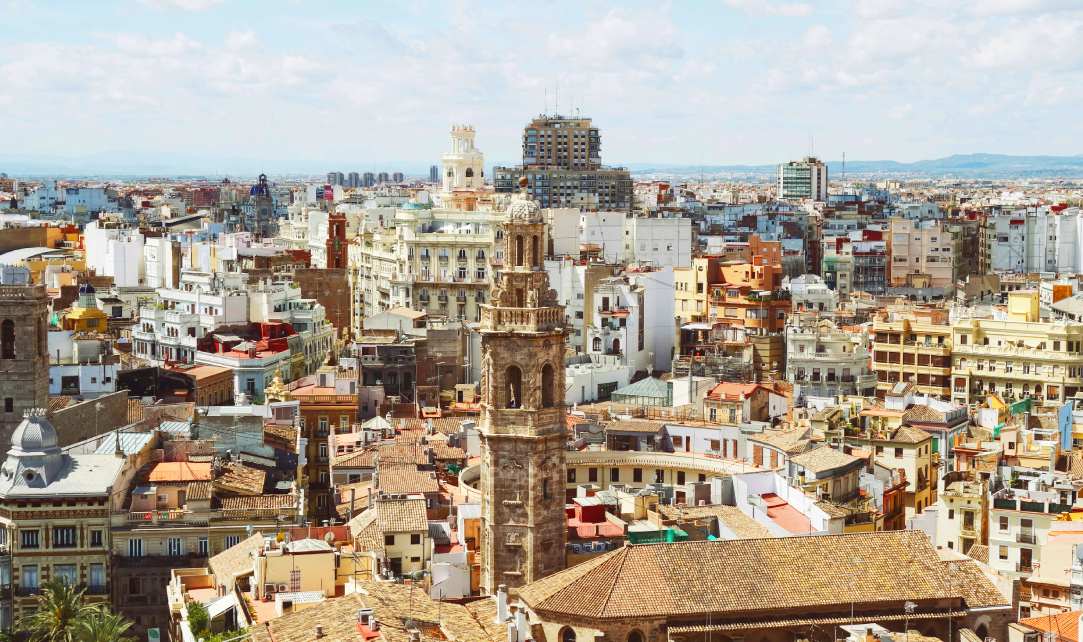
Continuing south from Valencia, your road trip leads you to Alicante, a city where golden beaches meet centuries of history and a vibrant Mediterranean lifestyle. With more than 300 days of sunshine each year, Alicante is a destination made for relaxation, exploration, and savoring the authentic spirit of the Costa Blanca.
The Alicante region is famed for its rice dishes, prepared in countless variations beyond paella: from arroz a banda to arroz con costra and the savory arroz negro. Enjoy them at beachfront chiringuitos or traditional taverns in the old town. If visiting in winter, don’t miss the local sweet specialty: Jijona nougat, a festive treat tied to the Christmas season.
Alicante blends laid-back Mediterranean living with lively evenings. The marina and historic center come alive with terraces and bars where you can enjoy a drink overlooking the sea. Outdoor enthusiasts will also find plenty to do, including hikes around Cabo de la Huerta, water sports, and scenic excursions along Costa Blanca’s picturesque coastline, dotted with charming towns like Altea, Calpe, and Villajoyosa.
With its mix of beach relaxation, cultural landmarks, and flavorful cuisine, Alicante is a natural stop before continuing toward Murcia and Cartagena. It’s also a convenient base for discovering the smaller coves and fishing villages that define the Costa Blanca.
Distance from Valencia to Alicante: approx. 165 km (about 2 hours via the AP-7).
Next stop: Cartagena, about 115 km (roughly 1 hour 15 minutes via the A-70 and AP-7).
From nearby Dénia Port, travelers can board ferries directly to the Balearic Islands, including Ibiza, Mallorca, Menorca, and Formentera. It’s a comfortable and exciting way to expand your road trip, adding an island-hopping adventure across the Mediterranean.
| Route | Frequency | Operator | Price From |
| Denia (Alicante) to Ibiza Ferry | Daily | Balearia | $101 |
| Denia (Alicante) to Mallorca Ferry | Several times a week | Balearia | $91 |
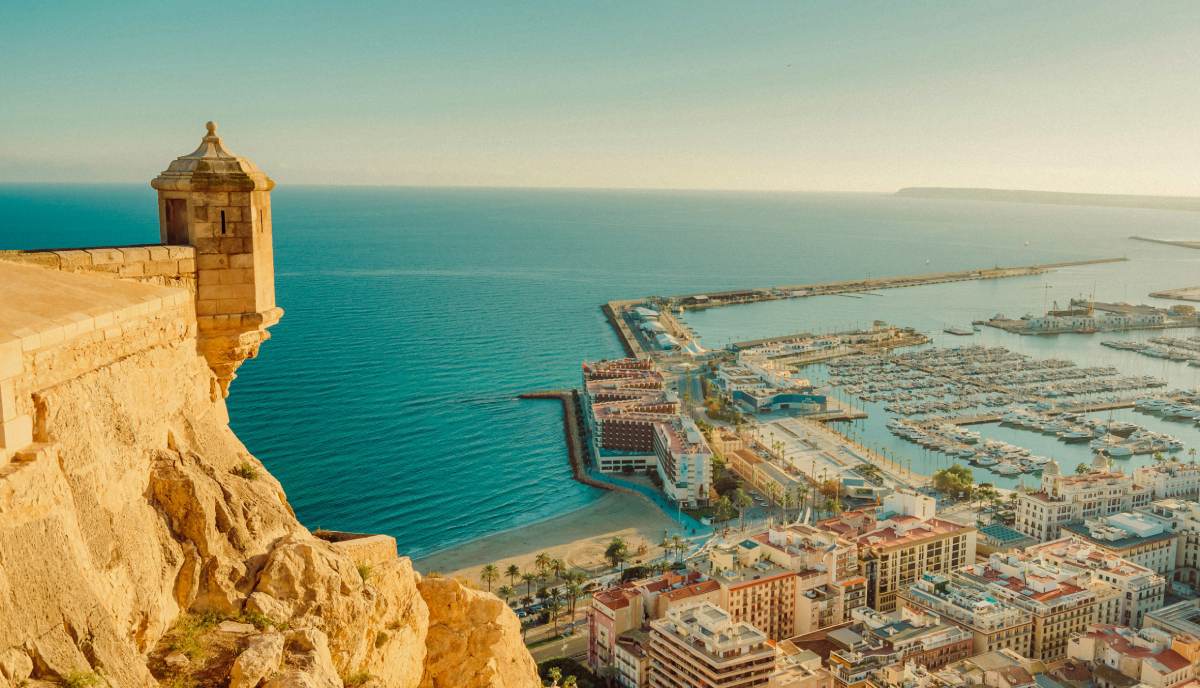
South of Alicante, your road trip continues through Cartagena and the region of Murcia, a stretch of coast and inland landscapes that capture the Mediterranean at its most genuine. Here, grand layers of history meet quiet coves, fertile orchards, and a culture shaped by both the sea and the land, far away from the bustle of Spain’s bigger tourist hotspots.
Murcian cuisine is a true reflection of its dual heritage of orchard and sea. Taste traditional dishes like zarangollo (scrambled eggs with zucchini and onion), the caldero del Mar Menor (a rice and fish dish), and marineras (a signature tapa of Russian salad topped with an anchovy). Pair your meal with a robust local wine, ideally from the Bullas or Jumilla appellations.
In Cartagena, you’ll breathe in a distinct maritime atmosphere enriched with history and culture, while Murcia offers a more urban Mediterranean rhythm, with its squares, gardens, and vibrant terraces. For a nature escape, head to the Mar Menor, Europe’s largest saltwater lagoon, an ideal setting for water sports or unwinding on peaceful beaches.
This stage of the route delivers a rich contrast: ancient heritage in Cartagena, urban charm and gastronomy in Murcia, and natural beauty in the surrounding landscapes. Together, they form a memorable stop before you venture into the dramatic, sun-baked scenery of Almería.
Distance from Alicante to Cartagena: approx. 115 km (about 1 hr 15 min via the A-70 and AP-7).
Distance from Cartagena to Murcia: approx. 50 km (about 40 min via the A-30).
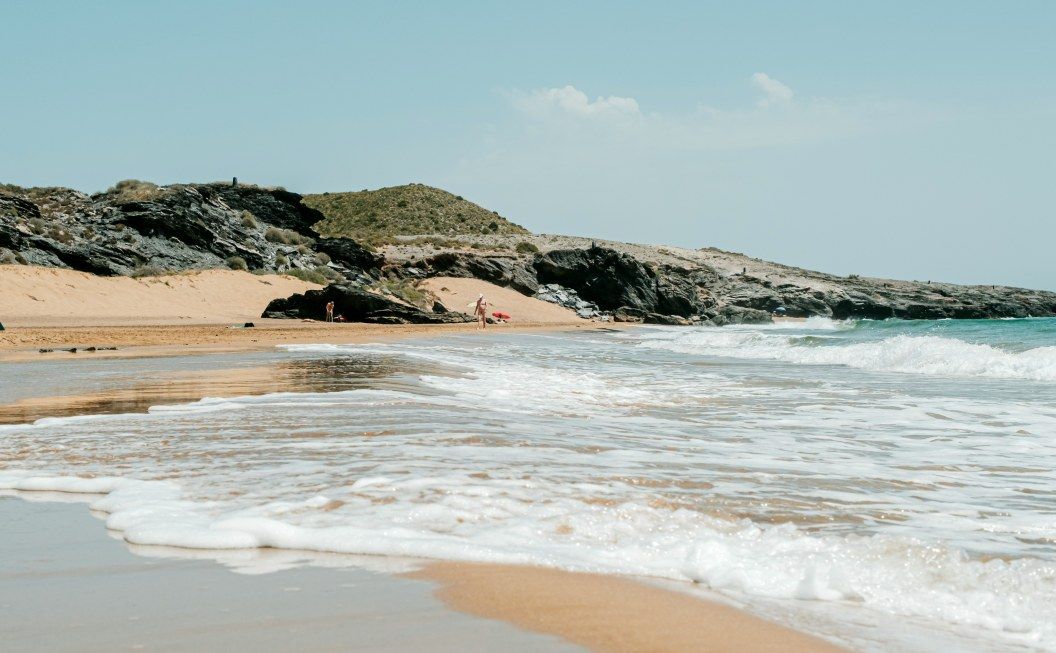
Your east coast road trip reaches its final great destination in Almería, a province that delights with its striking variety of landscapes, from pristine beaches to cinematic desert scenery. The capital city, also named Almería, preserves an authentic Andalusian atmosphere and a heritage shaped by centuries of history.
The Alcazaba of Almería is an imposing Moorish fortress dating back to the 10th century and is one of the largest of its kind in Spain. From its towers and walls, the views over the city and the Mediterranean are spectacular. To the east, the Cabo de Gata–Níjar Natural Park offers protected coastlines with hidden coves, crystal-clear waters, and volcanic landscapes.
Beaches such as Los Genoveses and Mónsul are among the most remarkable. In the historic center, the Cathedral-Fortress and lively squares invite you to stroll and soak up the local atmosphere. Just inland lies the Tabernas Desert, famous as the backdrop for legendary western films. Here you can visit original sets and film museums or spend a day at Mini-Hollywood, a theme park that recreates the cinematic spirit of those productions.
Almería’s cuisine reflects the fusion of sea and mountains. Typical dishes include ajo colorao, a hearty stew of potatoes and fish, and gurullos with rabbit, a traditional pasta and game dish. In the capital, tapas are a way of life, and they are often included with your drink, while along the coast of Cabo de Gata, fresh fish takes center stage.
Almería exudes a relaxed and authentic charm, far removed from the bustle of mass tourism. It is a haven for nature lovers, adventurers, and travelers in search of quiet, unspoiled corners. At sunset, walking along the city’s seaside promenade with the Mediterranean as your backdrop is the perfect way to close your journey.
Almería brings your road trip along Spain’s eastern coast to a fitting conclusion. In contrast to the cosmopolitan vibrancy of Barcelona and Valencia or the urban beaches of Alicante, here the landscape itself becomes the protagonist. The wild desert, rugged coastline, and untouched nature encourage you to slow down, disconnect, and explore at your own pace.
The drive from Cartagena or Murcia to Almería covers approximately 220 kilometers and takes about two and a half hours along the A-7 motorway.
The Port of Almería is one of the busiest in southern Spain and offers regular ferry services to Melilla and several destinations in North Africa. For those who wish to continue beyond the Iberian Peninsula, it presents the opportunity to transform a road trip into a Mediterranean crossing, opening the door to even more adventures.
| Route | Frequency | Operator | Price From |
| Almeria to Melilla Ferry | Daily | Naviera Armas | $56 |
| Almeria to Nador Ferry | Daily | Naviera Armas, GNV, Balearia | $79 |
| Almeria to Oran Ferry | 1-2 times a week | Naviera Armas | $76 |
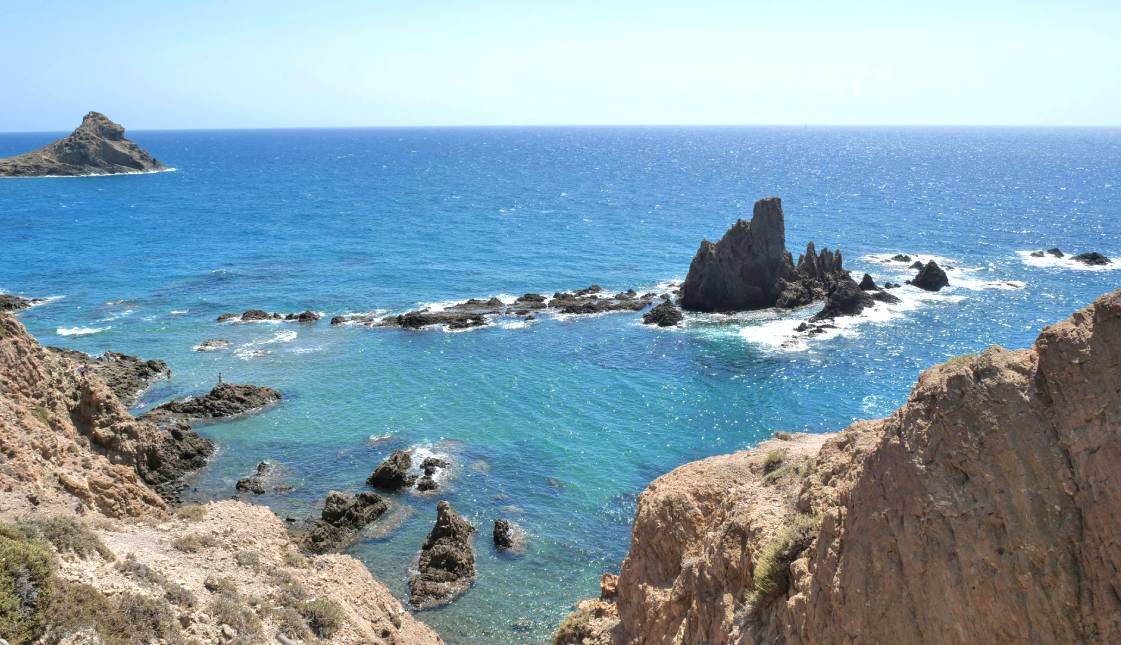
The sweet spots are spring (April to June) and autumn (September to October). During these months, the weather is warm but not overwhelming, the beaches and cities are less crowded, and prices are usually friendlier than in peak summer.
To really enjoy the journey without rushing, plan for 7 to 10 days. This allows time to explore each city at a relaxed pace. If you only have a few days, focus on the must-sees: Barcelona, Valencia, and Alicante.
Absolutely. Most Mediterranean ferries welcome vehicles on board, so you can keep the road trip going in the Balearic Islands, cross to Italy, or even head toward North Africa. Just remember to book ahead, especially in high season, as spots can fill quickly.
It depends on how you like to travel, but as a guide: car rental starts around €30–40 per day, mid-range hotels average €70–100 per night, and basic ferry tickets begin at about €25–30 each way. Factor in meals, fuel, and a few indulgences along the way, and you’ll have a flexible budget for a memorable trip.
Yes, it’s very straightforward. The AP-7 motorway connects the main cities smoothly, complemented by well-kept national roads. Distances between stops are short and manageable, which makes the journey both comfortable and enjoyable, even for less experienced drivers.